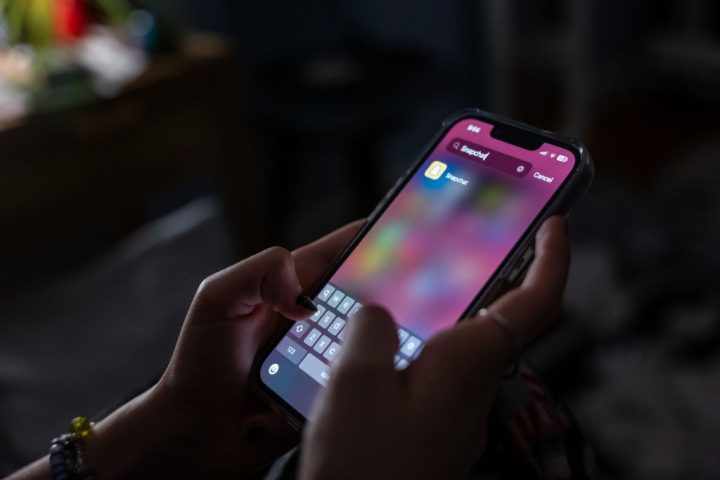Breaking news: schools have finally been given guidance on stopping kids from using mobile phones during the school day, three years after the government first called for a ban on phones in schools. The guidance is about as groundbreaking as announcing that loudspeakers should be banned in libraries.
Less than 1 per cent of schools currently allow unrestricted phone use, and around two thirds already have rules which mean that teachers should never see students using phones. This is a non-policy for a non-problem, and yet another example of a government with no serious ideas trying to look busy. As I say to my students: activity is not the same as purpose.
Banning phones in school doesn’t go anywhere near far enough in tackling the toxic cycle of addiction and anxiety
The first question is why has it taken the government so long to issue this guidance? Conversations around banning phones in schools started in 2018, when a Department for Education spokesperson said government policy wasn’t necessary because ’95 percent of schools have some sort of restriction already’. In February 2019, the then schools minister Nick Gibb said they should be banned. Then in April 2021 in his role as education secretary Gavin Williamson also said he wanted to update government policy on this. He launched a consultation that June, with plans to bring it in the following spring. Then, with Nadhim Zahawi installed as education secretary in September 2021, the government inevitably U-turned on the policy the following February.
So here we are two years later, after another announcement in October. I wonder how many more phone bans they can bring in before the election?
This guidance isn’t even a case of better late than never. The reality is that this policy achieves nothing because schools still have to deal with all the consequences and problems that arise from students having unlimited access to smartphones for the rest of the day: sleep deprivation, poor concentration, cyberbullying, sexting gone wrong. Even if the students can’t use their phones, it doesn’t mean they do not want to: studies have shown that the mere presence of a phone is a distraction in and of itself. Given that, on average, teenagers get around 237 notifications a day, it’s no wonder they are twitching to check TikTok in the toilet or are sneakily checking their Snapchat, regardless of sanctions.
The truth is, banning phones in school doesn’t go anywhere near far enough in tackling this toxic cycle of addiction and anxiety. The government will ban vapes because they are supposedly harmful to children, and yet won’t ban devices that are portals to far greater dangers: suicide chat rooms, pro-eating disorder content, drugs on the dark web, extreme political content and conspiracy theories. How did we get to a place where a disposable raspberry-flavoured vape causes a moral panic, but a child discovering violent pornography in the playground is fine, and simply an accepted part of 21st century life?
The current Education Secretary Gillian Keegan says we ‘need to reset this social norm’. She is right, but not in the way that she thinks. Too many people, and too many politicians, are too quick to pathetically and disingenuously claim that the Big Tech genie is out of the bottle and there is nothing we can do about it. This is simply not true.
If we really want to reset the social norm, there are two options we need to seriously consider. Either we tackle the hardware, and ban smartphones for under-16s, or we tackle the software, and have ‘child-friendly’ devices which are stripped down to essentials. Both would remove the pressure on parents who too often let their children have smartphones for fear of social isolation, and both would free children from the relentless dopamine stimulation of digital life.
Of course, some may say that it’s about education and exposure: technology is part of modern day life. Yet so is alcohol, and we don’t give it to 11-year-olds. Parents aren’t allowed to give children cigarettes or prescription drugs so they can pacify them or teach them to regulate their addiction; so why do we do the same with smartphones? Fully-functioning adults can barely control their screen-time (how many of us are guilty of checking our phones under the desk in a meeting, or distractedly scrolling through social media when we should be doing something else?) Yet we expect hormonal adolescents to be able to overpower something that is designed, in every way imaginable, to keep them engaged for as long as possible. It would be an unpleasant wake up call: banning children from using phones would mean many adults and parents would have to face up to their own corrosive habits – but it is a necessary one.
Instead, the government continues to generate headlines on problems that don’t exist rather than the ones that actually do. The guidance is a desperate attempt to look like it is ‘doing’ something, but all it is doing is confirming what schools already know: smartphones are a distraction, and need to be controlled in school. What we need help with now is what we don’t know: how do we protect children for the other 18 hours of the day?






Comments